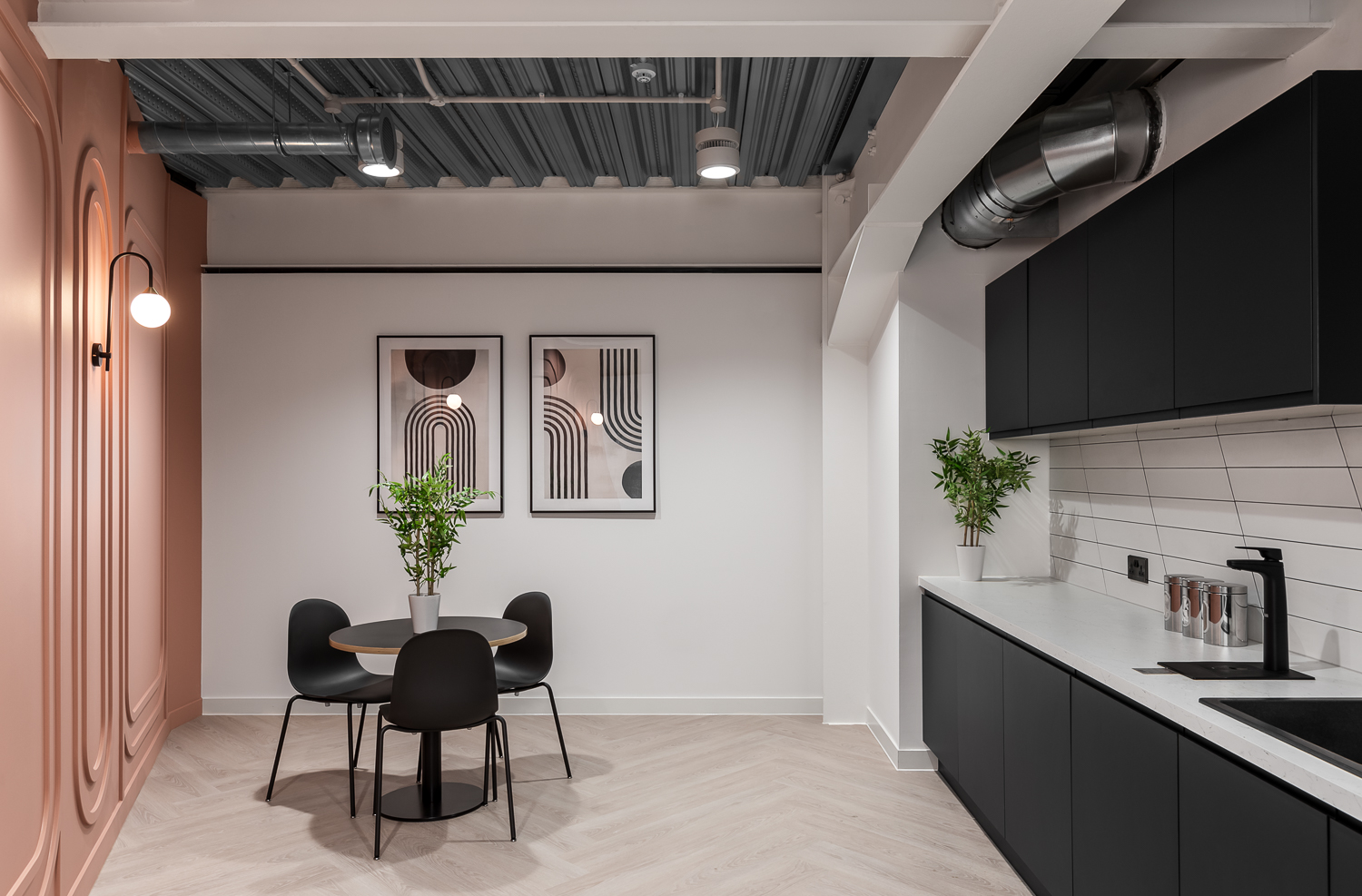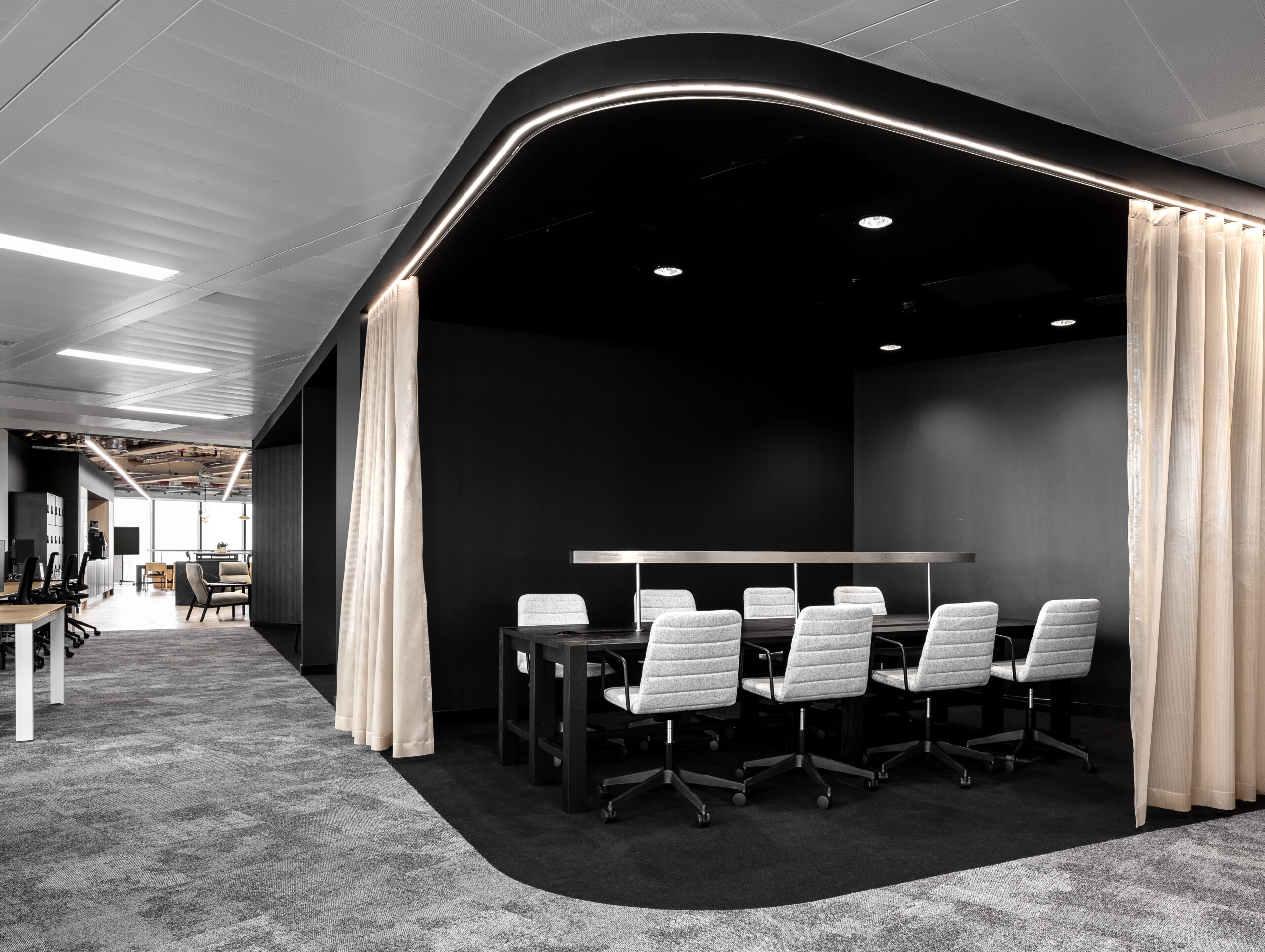Staff productivity levels can make or break a business. When your staff work efficiently, your company flourishes, creating a better culture, supporting business growth and saving money. Here we’ve listed our top seven office design tips to boost staff productivity.
1. Natural light
Designing an office that amplifies natural light is an easy way to support employee productivity. Natural light makes for happier and healthier staff; it is linked to circadian rhythms and vitamin D which naturally improves our mental and physical health. In comparison, poor lighting and artificial light can cause fatigue, eyestrain, headaches, and overall irritability which limits productivity.
There are several design techniques that can be used to improve or amplify natural light, for example, maximising windows, mirrors, and reflective furniture. Employing a lighter colour palette can also help to reflect natural light and make a room appear larger and brighter. If your office is in a space without access to natural light, full spectrum lightbulbs can be employed to mimic midday sunlight and encourage the brain to alert and productive throughout the day.
2. Noise levels
An office with high noise levels is unconducive to work and will negatively impact productivity, while an office that’s considerably quiet can create an uncomfortable and unwelcome atmosphere. It’s all about striking the right balance and finding out how your team likes to work to create the optimal office environment.
High noise levels can have negative implications on both productivity and health. Noise can be distracting, reduces concentration levels, and in some instances can be linked to increased blood pressure and heart rate. There are many design techniques that can be used to minimise noise disruption and improve productivity. Open plan offices are the biggest culprit for noise transfer; including small, quiet workspaces supported by protective acoustic materials will provide staff with a designated quiet area for focused work. Insulating doors and walls can also help reduce outside noise and diffuse sounds.

3. Biophilic design
Biophilic design is about creating spaces that are closer to nature. Biophilic design is more than just adding plants into your office, it also relates to incorporating natural light, colours, and natural materials like wood and stone to your design. Through these natural features and textures, you can reap the health benefits by bringing the ‘outdoors inside.’
Biophilic design has become increasing popular in office design, partly due to numerous studies that have proven that by incorporating elements of nature into the workplace, staff productivity, creativity, and morale increase. Recent studies have shown that when biophilic design is introduced, fatigue declines by 38% and sickness related absences are reduced by 30%.
4. Room colour
The colour palette of your office can impact the mood and productivity of your team. Certain colours can promote different feelings in your staff, encouraging them to be creative or concentrate. For instance, natural colours such as classic blues and greens are perennial favourites; blue is linked to productivity whilst green, a restful hue, can stimulate thinking and prevents eye fatigue. As colour is subjective, it is useful to look to research and colour theory for guidance when choosing your colour palette.
5. Activity-based working
Another way to boost staff productivity in the office is to provide a variation of workspaces for different working patterns and styles. Include spaces for collaboration, creativity, and focused work in your office layout to ensure employees always have access to a suitable workspace for the task at hand.
Activity-based working leads to better communication and collaboration, as well as increased employee satisfaction and productivity. By designing spaces that are based on the activity, employers can stimulate certain types of behaviours which will improve efficiency and innovation.

6. Digital infrastructure
The digital infrastructure of a business is crucial to its success. In today’s modern office, technical difficulties and delays not only slow your team down, but they can also impact your business’ image. To ensure productivity and business continuity, it is essential you invest in your digital infrastructure; make sure you have a strong internet connection, a secure server, and equipment to support virtual collaboration. As many companies adopt a hybrid model of working, it is crucial that employees workstation at home is set up efficiently to ensure connection and productivity.
7. Office ergonomics
Ergonomics is the science of designing the workstation to fit within the capabilities and limitations of the worker, ensuring a comfortable working environment for maximum productivity and efficiency. An ergonomically correct office workstation will help staff avoid fatigue and discomfort.
There are several design solutions that can be introduced to your office to ensure comfort. Ergonomic office chairs will encourage workers to sit with the correct posture – supporting their back, neck, shoulders, and hips. Investing in adjustable furniture like standing desks will give your workers varied positions to avoid strain and work in comfort.
Your office design has a huge impact on the output of your staff and there are a multitude of design solutions that can boost productivity in the workplace. From easy fixes like plants, to carefully planned design features like the colour palette and ergonomic furniture.